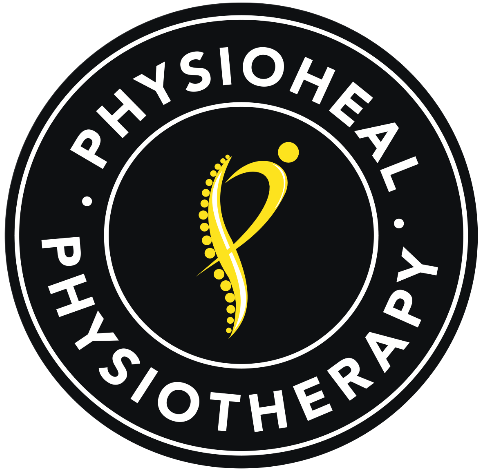We Are Open For Stretching Exercises in Gurgaon!
Fill the form and let us call you back.
Comprehensive Guide to Stretching and Its Role - Physioheal Physiotherapy
Stretching Exercises
Are you seeking a comprehensive guide to understanding stretching and its vital role in your physical well-being? Look no further! In this detailed exploration, we will delve into the world of stretching, covering everything from its effects and indications to various types of stretching techniques, diagnosis, treatment, and the invaluable role that physiotherapy plays. Discover how stretching can be your key to achieving optimal health and mobility with Physioheal Physiotherapy in Gurgaon.
Effects of Stretching
Stretching isn’t just about feeling limber; it offers a multitude of benefits that can positively impact your life:
- Improved Flexibility for Aging Gracefully: Regular stretching delays the onset of impaired mobility commonly associated with aging. Embrace flexibility to maintain an active lifestyle as you grow older.
- Enhanced Performance: Athletes and fitness enthusiasts can expect improved physical performance due to increased flexibility, helping you reach your peak potential.
- Injury Prevention: Stretching is your shield against injuries and damage, as it readies your muscles and joints for the physical demands of daily life or intense workouts.
- Better Blood Circulation: Stretching promotes blood flow, reducing muscle soreness and expediting recovery times, ensuring you’re ready for your next activity.
- Expanded Range of Motion: Say goodbye to stiffness as stretching enhances your joint’s range of motion, providing you with a wider spectrum of movement.
Indications for Stretching
Wondering when to incorporate stretching into your routine? Here are some key indications:
- Improved Joint Range of Motion: If you find your joints feeling stiff and restricted, stretching can significantly enhance your mobility.
- Posture Enhancement: Strengthen your back muscles through stretching to achieve better posture and reduce the risk of postural issues.
- Balanced Muscle Function: Stretching helps restore normal neuromuscular balance between muscle groups, ensuring optimal functionality.
- Injury Prevention: Stretch before and after exercise to minimize the risk of muscle soreness and injury.
Types of Stretching Techniques
There are several stretching techniques to explore, each with its unique benefits:
- Static Stretch (SS): Static stretching (SS) is a slow-paced controlled physical activity which involves putting the body part in a comfortable position that elongates the muscle without causing pain with low force for a prolonged duration of time (usually 30 seconds). It comes in two forms: active-static and passive-static stretching.
-
- Active-static Stretching: Perform static stretches without assistance.
- Passive-static Stretching: Engage in stretches with assistance from external forces.
Effects of Static Stretching:
-
- Improved joint range of motion
- Reduced muscle stiffness and pain
- Lowered risk of muscle strains and injuries
- Enhanced postural awareness and body posture
- Increased circulation for faster recovery after exercise
- Dynamic Stretch (DS): Dynamic Stretching (DS) is a controlled movement, unlike Ballistic stretches that involve bouncing movement and increases the risk of injury, which involves the performance of a movement progressively increasing the range of motion through successive repetitive motions till the end of the range is achieved. It can be done standing or while moving. For individuals who perform specific sports such as swimming, dynamic stretching exercises involve mimicking the movement of the activity such as circling arms before getting in the water and is often done after static stretching. Effects of Dynamic Stretching:
- Restoration of physical functioning and flexibility
- Improved neuromuscular control, enhancing nervous message conduction speed, motor control, and muscle compliance
- Elevation of core body temperature
- Acceleration of energy production
- Enhancement of performance measures such as speed and strength
- Pre-contraction Stretching (PNF): Incorporating both contraction and stretching, PNF stretching is known for relaxing muscles and increasing muscle tone. The most common method is the contract-relax technique. It is partner-assisted stretching where muscles are contracted for a few seconds, followed by a relaxation period and extended stretching. Benefits of PNF Stretching:
- Deep muscle relaxation and elongation
Effective Stretching Practices
To maximize the benefits of stretching, follow these best practices:
- Warm up before stretching to improve soft tissue extensibility.
- Maintain each stretch for 10-15 seconds to overcome initial muscle tension and achieve lasting change in tissue flexibility.
Rehabilitation Benefits of Stretching Programs
Our stretching programs offer numerous rehabilitation advantages:
- Increased Range of Movement
- Reduced Muscle Tension/Tone
- Enhanced Proprioception and Body Position Awareness
- Improved Neuromuscular Coordination
- Lower Risk of Muscular and Soft Tissue Injuries
- Improved Joint Capsule Lubrication
If you’re interested in learning more about our stretching programs or wish to schedule an assessment, please consult Dr. Divya Gaur at Physioheal Physiotherapy Gurgaon. She is one of the best physiotherapist who will work closely with you to ensure a successful rehabilitation journey. To book an appointment, call +91-9999259307, book online, or request a phone consultation.
